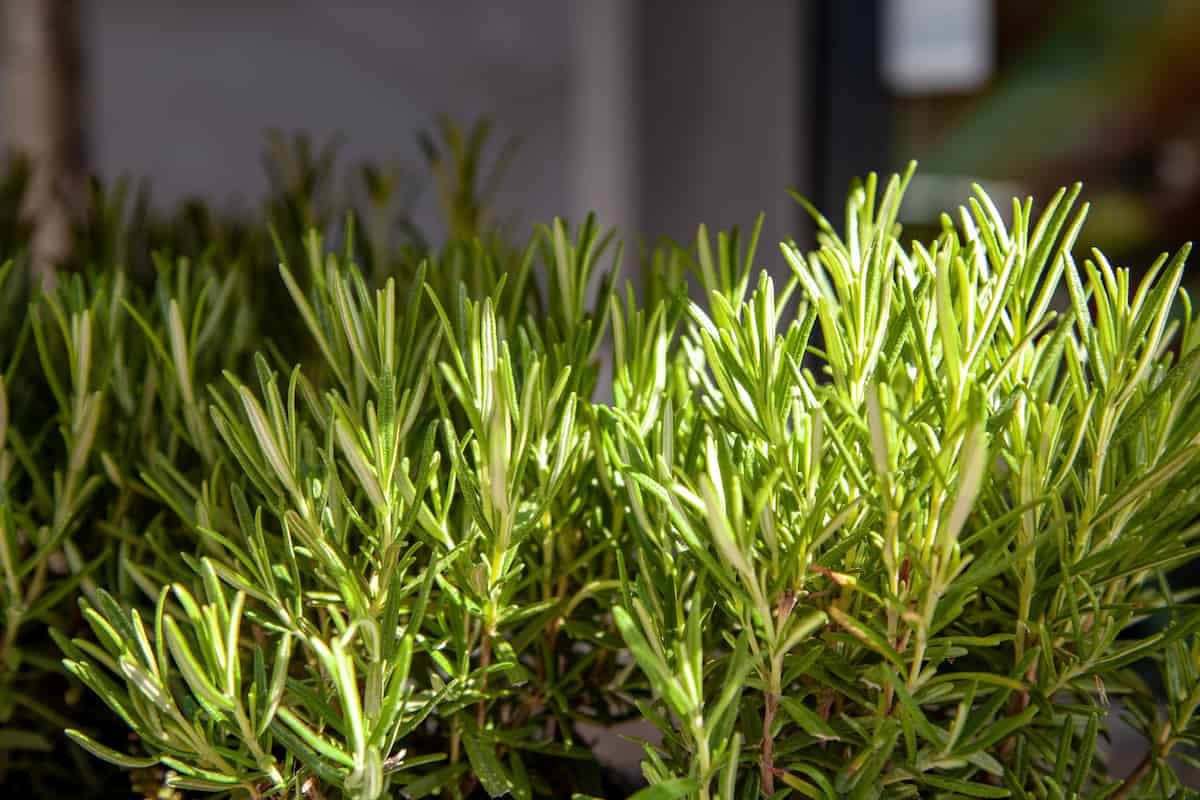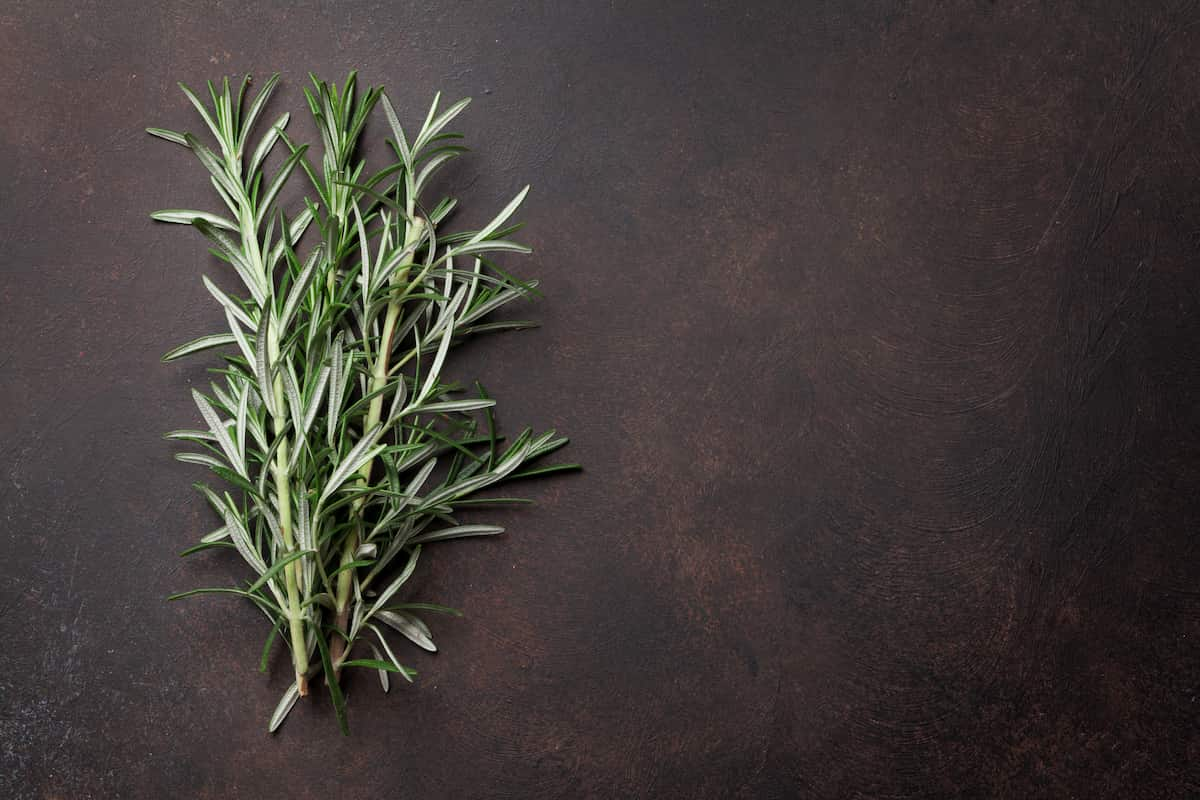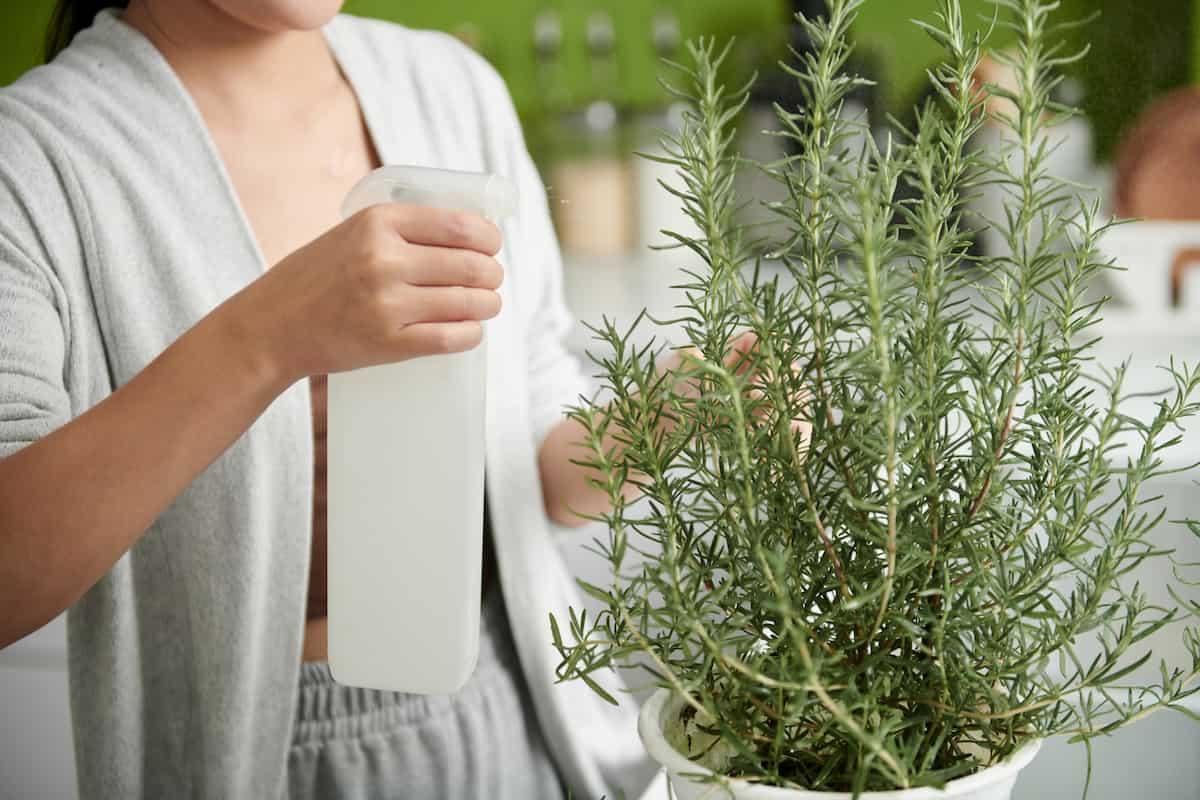Rosemary is a popular herb in cooking and is also used in aromatherapy. If you want to grow your rosemary plant, propagating it from cuttings is a great way to start. Below we learn how to grow rosemary from cuttings in water and soil and a step-by-step guide to growing rosemary from cuttings.

How to Grow Rosemary from Cuttings
Materials Needed
- Rosemary plant
- Sharp garden shears or scissors
- Rooting hormone powder
- Small pots or containers with drainage holes
- Potting mix
- Water
- Plastic bag or plastic wrap
Choose the Right Time
The best time to take rosemary cuttings is in late spring or early summer when the plant is actively growing. This is because the plant has enough energy to produce new roots and grow new foliage. Choose a healthy, disease-free plant with vigorous growth.
Choosing the Right Location
Rosemary prefers a sunny location with well-drained soil. Choose a spot in your garden that receives at least 5 hours of direct sunlight daily. The soil should be loose and well-draining, with a pH between 6.0 and 7.0. If your soil is heavy or clayey, you can amend it with sand, perlite, or vermiculite to improve drainage. Avoid planting rosemary in low-lying areas or places where water pools, as this can cause root rot.
Prepare the Cuttings
Cut a 4-6 inch (10-15 cm) long stem from the rosemary plant using sharp garden shears or scissors. Ensure to cut just below a node. Nodes are the locations on the stem where the leaves grow, and they contain a concentration of hormones that promote root development.
Apply Rooting Hormone Powder
Dip the cut end of the rosemary cutting into rooting hormone powder. Rooting hormone is a powdered or liquid substance that contains natural or synthetic growth hormones, such as auxins, which stimulate root growth. This will help the cutting develop roots more quickly and increase the chances of success. Tap off the excess powder to prevent buildup on the cutting.
Plant the Cuttings
Fill small pots or containers with a well-draining potting mix. You can use commercial potting soil or mix your own with sand, perlite, or vermiculite. Make sure the container has drainage holes to prevent waterlogging. Water the potting mix until it is moist but not saturated. Make a small hole in the potting mix with a pencil or your finger, and insert the cutting into the hole. Press the soil around the cutting gently to ensure good contact between the stem and the potting mix. Repeat the process for each cutting, spacing them about 2-3 inches (5-8 cm) apart.
Water and Cover the Cuttings
Water the cuttings until the soil is moist. Place a plastic bag or plastic wrap over the container to create a mini greenhouse that will keep the cuttings moist and warm. The plastic will also help retain humidity, which is essential for root development. Secure the plastic bag or wrap it with a rubber band or tape, ensuring it doesn’t touch the leaves or stem.
In case you missed it: Frequently Asked Questions About Rosemary Farming

Provide Optimal Conditions
Place the container in a warm and bright location, but avoid direct sunlight or extreme heat. Ideal temperatures for rooting are between 65-75°F (18-24°C). Overwatering can cause the cuttings to decay, so make sure the soil is moist but not soggy. Check the moisture level regularly by sticking your finger into the soil and water as needed.
Monitor and Transplant
After 3-4 weeks, check the cuttings for signs of roots. Gently tug on the stem to see if there is resistance, indicating the roots have formed. Once the roots are well-established, you can remove the plastic cover and gradually expose the cuttings to normal conditions. When the roots are 1-2 inches (2.5-5 cm) long, it’s time to transplant the cuttings into larger containers or directly into the garden. Choose well-draining soil and a sunny location with good air circulation. Water the newly transplanted cuttings well, and continue to monitor their growth and health.
Fertilize the Cuttings
After the cuttings have developed roots and grown well, you can start fertilizing them with a balanced fertilizer. Use a liquid fertilizer diluted to half strength and apply it every two weeks during the growing season.
Dealing with Pests and Diseases
Rosemary is generally a hardy and disease-resistant plant, but it can be affected by pests and diseases. Common pests that attack rosemary include spider mites, aphids, and whiteflies. Keep your plants well-watered and healthy to prevent infestations, and remove any damaged or infected leaves or stems. You can also use insecticidal soap or neem oil to control pests.
Diseases affecting rosemary include powdery mildew, root rot, and leaf spot. Ensure your plants are well-spaced and have good air circulation to prevent diseases. It is important to avoid fungus infestations that can be caused by overwatering or watering from above. If you notice any signs of disease, such as yellowing leaves, brown spots, or wilting, remove the affected plant parts and treat them with a fungicide if necessary.
Prune and Shape the Plant
As your rosemary plant grows, you can prune it to maintain its shape and promote bushier growth. Prune the plant regularly by cutting off the top 1-2 inches (2.5-5 cm) of growth, and pinch back the tips of the branches to encourage lateral growth. This will help the plant develop a compact, bushy shape.
Harvest and Enjoy
When your rosemary plant is mature, you can start harvesting the leaves for cooking or aromatherapy. Cut off the stem’s top 1-2 inches (2.5-5 cm) and remove the leaves. Avoid cutting too much of the plant at once, as this can weaken it. You can also dry the leaves by hanging them upside down in a well-ventilated area for a few weeks and storing them in an airtight container for later use.
In case you missed it: How to Grow Basil from Cuttings: A Complete Planting Guide for Beginners

Conclusion
In conclusion, growing rosemary from cuttings is a simple and cost-effective way to propagate new plants. With a little patience and attention, you can enjoy fresh rosemary’s delicious flavor and fragrance in your culinary creations and aromatherapy practices.
- Feed Your Flock for Less: Top 10 Tips to Save on Chicken Feed
- Ultimate Guide to Ossabaw Island Hog: Breeding, Raising, Diet, and Care
- Hatching Answers: The Top 10 Reasons Your Chickens Aren’t Laying Eggs
- Eggs and Economics: Breaking Down the Cost of Raising Backyard Chickens
- Defend Your Greens: Proven Methods to Keep Iguanas Out of Your Garden
- Ultimate Guide to Cinnamon Queen Chicken: A Comprehensive Guide for Beginners
- Ultimate Guide to California Tan Chicken: Breeding, Raising, Diet, Egg-Production and Care
- Ultimate Guide to Marsh Daisy Chicken: Breeding, Raising, Diet, and Care
- 10 Types of Chicken Farming Businesses You Can Start for Profits